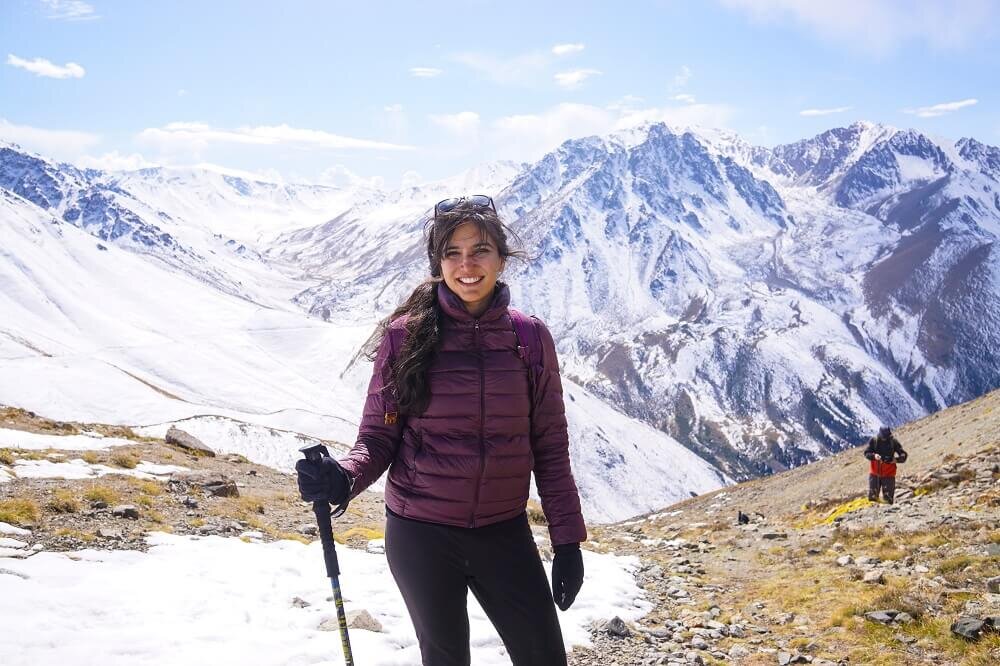What To Wear Hiking: In Summer, Spring, Fall & Winter
/The world of hiking fashion has changed drastically over the past few years. Lightweight hiking gear with the right technology and fit has changed the way we approach hiking wear.
It’s no longer ugly traffic light colours in red, yellow and green but there are different colour spectrums and layers, texture, material, fit and seasons to tailor-made your hiking wear.
There are gazillion options in the market and yet it can be very confusing when all you want is a neat setup that you can actually use for hiking, camping or just being outdoors. Outdoor companies have been trying to push cut-throat hiking products and extend the entire range of gender-specific men’s and women’s hiking wardrobes.
So, what to wear hiking when you’re outdoors? And why is appropriate outdoor clothing so important? The key reason is “comfort” and protection against elements such as hypothermia. Wearing the right clothing that’s suitable for changing altitude, terrain and alpine areas are critical.
I live in a tropical country, and shorts and 3/4 hiking pants to protect myself from leeches and overgrown roots are my go-to hiking bottoms! But if you’re in a country with 4 seasons, chances are you’d want to find an adaptable hiking gear setup that can be used for all seasons or some seasons.
Disclosure: Some of the links below are affiliate links. I only provide unbiased and completely honest recommendations. Read more about the site’s privacy policy.
What To Wear Hiking: A Guide To Hiking Wardrobe Essentials
what to wear when hiking in the outdoors in summer, winter, fall or spring? Here’s me at annapurna base camp.
If you are wondering, what to wear while hiking, I have put together a list of the best hiking clothes that I would recommend for every backpacking and hiking trip.
First, What NOT To Wear When Hiking
Clothing can be a hugely personal issue especially when you’re hiking. I had a friend who is an experienced hiker and yet he would turn up in jeans every single time. He wore jeans when hiking Everest Base Camp — and got schooled, policed and the stink eye from thousands of other intrepid climbers who had the best lightweight clothing.
Did he freeze? Regret his choice of clothing? He couldn’t care less because he compared his clothing and footwear to the Sherpas lugging their gear. They didn’t have the best and yet it made it work! Having said this, people have hiked for thousands of years without spandex and nylon, but barely ever in cotton.
Between hypothermia and chafing risks, I recommend not wearing jeans or anything cotton and here’s why:
Cotton: The worst kind of fabric to wear when hiking. It is extremely moisture-absorbing – it can absorb as much as 2700% of its own weight in moisture. For a basic idea of how this compares to other material: polyester absorbs up to 0.4% of its own weight in moisture, silk 30% and Merino wool 33%.
Denim: While denim is hugely universal in casual wear, it is the worst item of clothing when hiking. If your jeans are wet, it can cause painful chafing and even lead to blisters, infection and hypothermia. They’re also heavy and take a long time to dry.
Fashion sneakers: I have seen people in Central Asia use fashion sneakers to hike a mountain and while they may be used to it, the average person should avoid fashion sneakers unless they want to slip and fall!
All hikers need to wear waterproof, and moisture-wicking clothing, and here’s how to choose the right hiking clothing.
How To Choose Hiking Clothing
choosing what to wear when hiking is important no matter the seasons.
If you’re doing serious hikes, I would say don’t worry about how you look (Nature won’t judge!). Most hiking equipment are technical lightweight stuff, which is basically function over fashion. Fit is important but not for appearances.
The absolute non-negotiable all-essential hiking clothing that would make a huge difference is hiking shoes/boots. You don’t want to be that person with the rolled ankle lagging behind. (Read: 9 Best Minimalist Hiking Shoes and Boots (Men & Women))
Here are some strategies on how to choose the best hiking clothing:
Layer up: The key to hiking clothing is layering. Each clothing layer has a unique function and you can always remove and add layers depending on weather patterns.
Function over fashion: As mentioned earlier, that thick jeans of yours may look good when starting out but it’ll slowly worsen as the weather changes! Avoid anything rigid.
Prepare for the weather: Forecasts can change in a minute so be ready to adapt to weather patterns whenever it is snowier, wetter or colder than predicted.
Tweak your preferences: When buying gear, try to strike a balance between comfort, weight and price. Grade it according to your primary preferences. Going ultralight also means spending more and if you’re not ready to do that, then go for fit and comfort.
It’s all about good hiking boots and trail shoes: This is a big decision when hiking whether it is for the first time, or for a major trip. Find the right shoes and suitability for that terrain.
The Basics of Fabric
Merino Wool: When I think of wool, I think of old-school, thick, scratchy wool clothing. But times have change and now you have a special type of wool, Merino wool that makes moisture-wicking, soft fine fibers the go-to choice when hiking without worrying about stench.
Polyester/Nylon: Definitely easier on the wallet than merino wool, synthetics are great for wicking sweat. The only downside is that they’re not odour-free sometimes. They work well as a baselayer.
Fleece: While they’re made from polyester, they have great insulating function and the best next layer before donning a down jacket.
Down: Not the best in west conditions but they’re extremely lightweight and perfect for cold temperatures. That’s when a hard-shell nylon jacket in the form of synthetics helps in creating that extra layer of protection from wind and rain.
What To Wear Hiking: By The Season
what to wear when hiking in summer, winter, fall or spring?
With varied temperatures, you’ll need to know how to plan accordingly on what to wear while hiking according to different seasons. Summer season calls for breathable and sweat-wicking and lightweight hiking gear while Winter requires a careful selection of waterproof, durable material with a lot more layering added to your hiking clothing.
What To Wear Hiking In Summer
The tropical summers can be searingly hot and humid which is why there’s not a lot of clothing to pack for summers other than breathable and light fabric. Try to select a fabric that is lighter in colour as they reflect heat and don’t forget to pack sun hats for travel.
The best fabrics for summer heat are polyester and nylon. You can wear cotton if you want to a for a moderate-hike but it not advisable. Here’s what to wear
Underwear/bra
What To Wear Hiking In Spring
Hiking in spring can be tricky — you have to prepare for wild weather patterns which can quickly change from rain to a complete mud-fest. When hiking in spring, layering is everything but you need not make it as exhaustive as a winter trek list.
It would still follow a 3 layer system when hiking. Here’s what to wear when hiking in spring:
Wicking t-shirts - short sleeve / long sleeve
What To Wear Hiking In Fall
Perhaps the best time of the year to go for a hike! For most base-layers you can go for quick drying underwear and undergarments. Put on a mid-layer insulated hiking jacket and top it up with a rain jacket when it rains.
You can also put on some convertible pants that can work as a 2-in-1 shorts and hiking combo. I often wear hiking leggings when trekking in fall as well, and this could work as an option if you’re not a big fan of hiking pants.
What To Wear Hiking In Winter
Winter brings its own challenges and what to wear highly depends on temperature, snow conditions and overall weather forecast. A lot of synthetics and merino wool should be used when hiking in winter.
For winter hiking tips, you’ll also want to ensure your undergarments and head-to-toe approach are all moisture-wicking hiking essentials. Starting with the basics for your base layer, creating a level of insulation with a mid-layer and finally an outer-layer.
Base Layer
Mid-Layer
Outer-layer
Sunglasses (to avoid snow-blind)
This should give you a complete understanding of what to wear when hiking. For more detailed guides and references, read my other hiking posts:
Like this story? PIN IT








